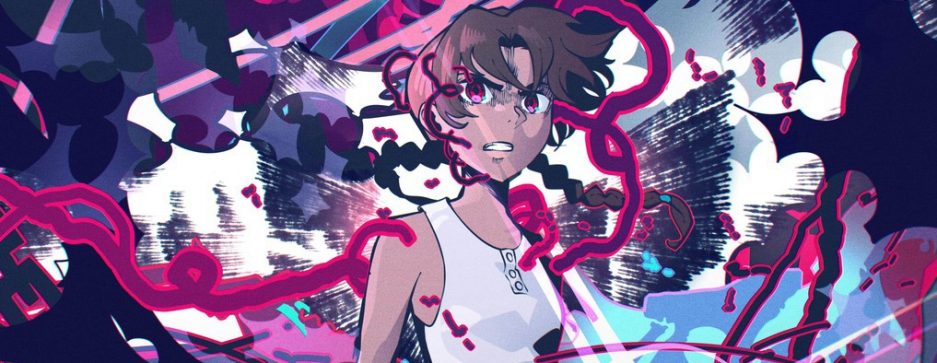My Hero Academia #68
Key Animation: Sakiko Uda (宇田早輝子)
Geth: While it’s not necessarily a competition, one would have to imagine the sign of a job well done if you’re Sakiko Uda is seeing your part being praised over the legendary Yutaka Nakamura, both of whom attended HeroAca #68. Many fans, especially of the mecha-variety, were justifiably quick to praise her work as she handled Kirishima’s hardening-transformation and approached the scene about as reasonably as you would expect from someone as well-versed in all things even semi-adjacently mecha-related as Uda happens to be. The overwhelming minute details imbued in her drawings are astounding. So much so that there are areas of the scene which needed to be quite limited in frames, since as we know, the general principle holds that simpler designs tend to lend themselves more kindly to movement, and Kirishima here is anything but simple. Uda’s ubiquitous sparks and speed lines serve as a more than suitable substitute though!
Here’s to hoping it’s among the first of many great appearances on this season, since between the ongoing movie production and some of the familiar regular staff currently being stationed on shows like Fire Force, season 4 is going to need all the help it can get.
Pokémon 2019: Opening #1
Storyboard: Satoshi Nakano (中野悟史 ) Animation Supervision: Shuuhei Yasuda (安田周平)
Key animators covered: Maki Kawake ( 河毛雅妃 ), Osamu Murata ( 村田理 ), Takashi Maenami ( 前並武志 ) and Sayuri Ichiishi ( 一石小百合 )
FAR: The new animated series of Pokémon starts with a rather modest episode but with a really energetic and sparkling opening, full of animation moments with an innovative flavor but also with a touch of nostalgia and some cute tributes to the past.
The notes of the utaite duo mafumafu accompany the directorial debut of Satoshi Nakano who is assisted by the trusted animator supervisor Shuhei Yasuda, with whom he collaborated in the role of character designer for the entire series of Sun and Moon, while making sure everything runs smoothly at the production advancement position we have Eriko Hirashima, a veteran of the series since Black and White.
Since the first cut of the opening, background animation starts with the nostalgic accession sound of a Game Boy, we can see how the direction shows through visual language the character differences between Satoshi, always moving and combining his silhouette with that of Pikachu, and Go, a character who often interacts with his Scorbunny, yet prefers to keep more distances with Pokémon. Although the two boys are both decidedly energetic, this simple narrative choice allows us to quickly get their character archetypes.
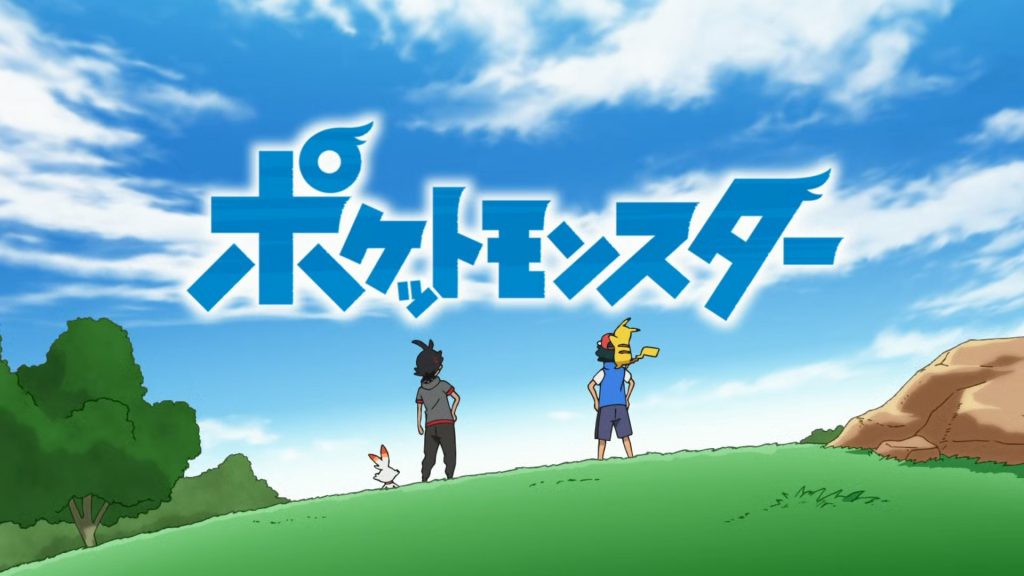
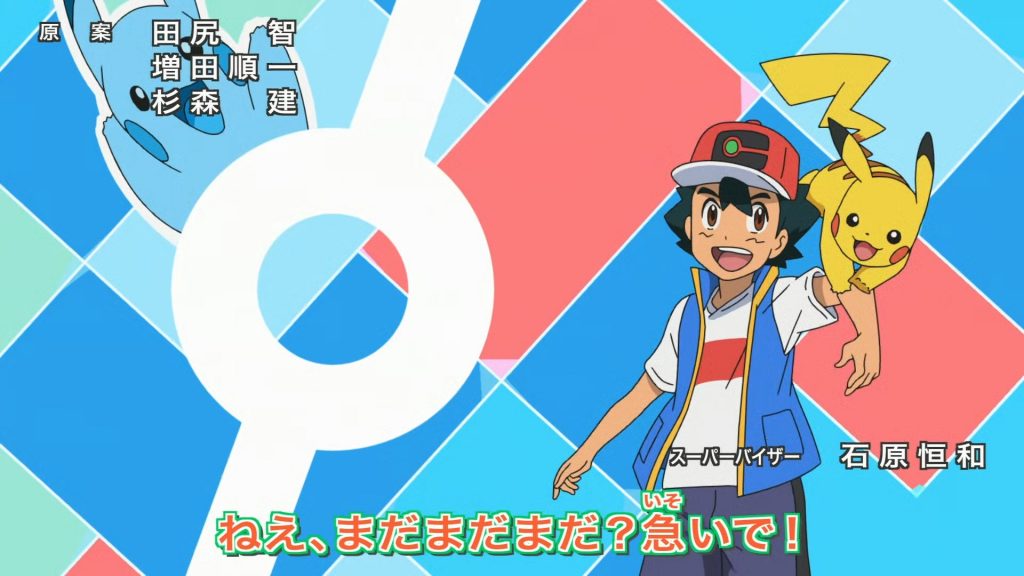
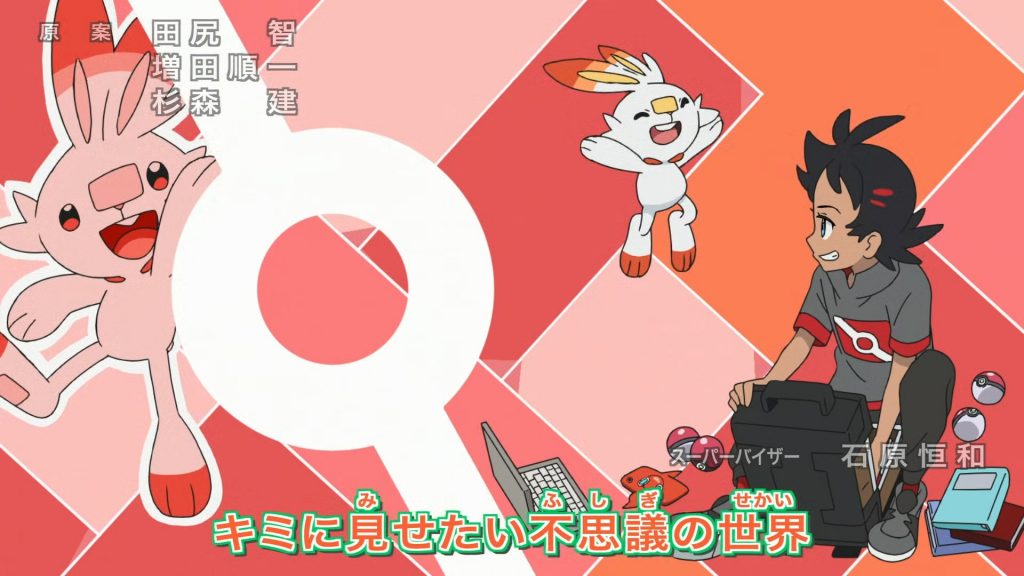
In the next sequence, in which the starters and layouts of the various regions are shown, we see the two characters in decidedly more goofy and entertaining poses, quite different from those of the second episode but nevertheless able to capture that sense of disarray that has characterized their first meeting. Slightly retro colors reminiscent of those of the previous series come well together with the idea of making a quick recap of the locations presented over the past two decades and the contrast between this simple sliding, standard construct typical of TV anime, contrasts brilliantly with the following sequence, animated by Maki Kawake, that shows through a dream-like compositing the desire that moves Go’s actions.
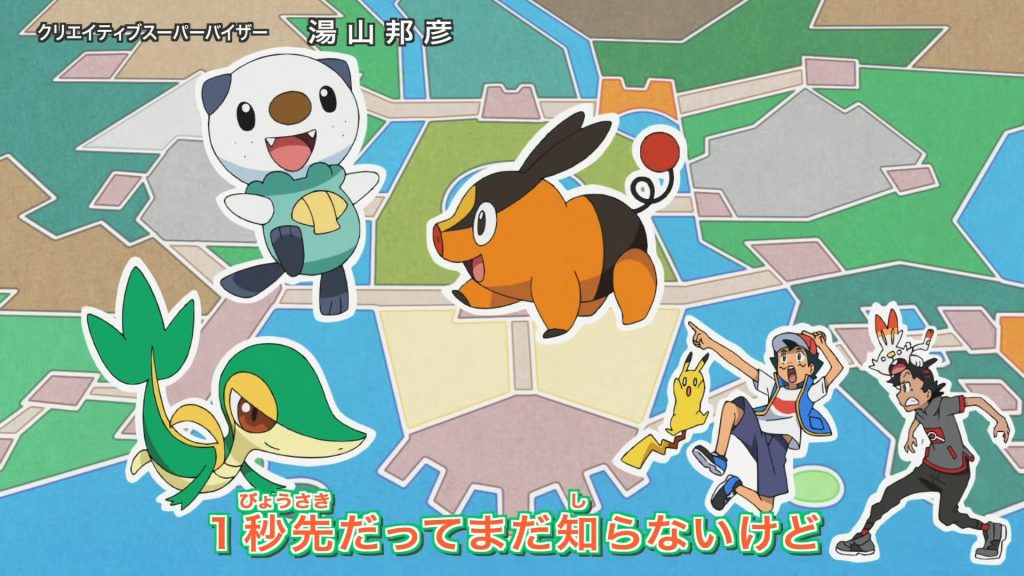
Osamu Murata’s dancing cut, which exploits a fish-eye perspective to show all the characters, makes a nice reference to a sequence animated by none other than Masaaki Yuasa in the movie Crayon shinchan: pursuit of the balls of darkness, very appropriate choice for representing Satoshi’s goofiness that also confirms the influences of an animator who gave us his best in elegant sequences, but sometimes also a lot of expressionist acting in the Sun & Moon series. Although extremely short, the differences in timing and choreography between each character gives the sequence rewatchability, perhaps the most important aspect that a choral cut like this one must have within a opening sequence which will keep us company for at least 6 months.
Despite being only slightly longer than the dance, the central sequence of the Opening is certainly the “double battle” orchestrated by Takeshi Maenami. We had already talked about him during a previous episode of Weekly Sakuga Review: no longer so young but professionally in the animation world for only a couple of years after a past as a cook and amateur illustrator. During the league arc of Alola he has become one of the main assets of the action side of the series and this sequence, while using his most classic expedients like kinetic lines during the humans acting and some simple smearing in-action, also presents relatively new elements for the animator such as the representation of impacts and anticipations through smearing with thinner contours. The fact that Tyranitar and Corvinight, two typically bulky, intimidating and heavy Pokémon, have no weight control in contrast to Pikachu and Scorbunny provides a sense of strength and control of the situation from the latters part suited to such joyful background music. It is also interesting to note that Maenami has given a decidedly un-metallic-like representation to Corvinight, a particular choice perhaps we will maybe not find in the series when this new Pokémon will make its official appearance.
Often referred by fans to as “Kanada school animator”, Maenami certainly shares with the great experimenter of the past the ambition to control the rhythm of a scene with a low frame-count through a smart modulation of the poses of the characters, often inserting a large number of different key-poses but a low number of drawings in the middle of the action and then slowing down once the main motion is completed, with more frames but a single pose.
To conclude, I wanted to talk about the simple but really cute cut made by Saiyuri Ichiishi, which we remember being the character designer and principal interpreter of Ken Sugimori’s artstyle adaptations within OLM until the end of the Advance Generation series. The expressions of Scorbunny and Pikachu change rapidly based on the lyrics and the frontal perspective from which the camera moves showing for the first time Mr. Mime provides this pokemon, always left a little aside as a comic appearance or as an extra, a sense of security and stability appropriate to the “guardian” of the protagonist now that he will follow him in his adventures. Certainly transmitting solidity and security through a style everyone has experienced before, like that of Ichiishi, from a calm point of view like a frontal perspective was a truly apt directorial choice.
